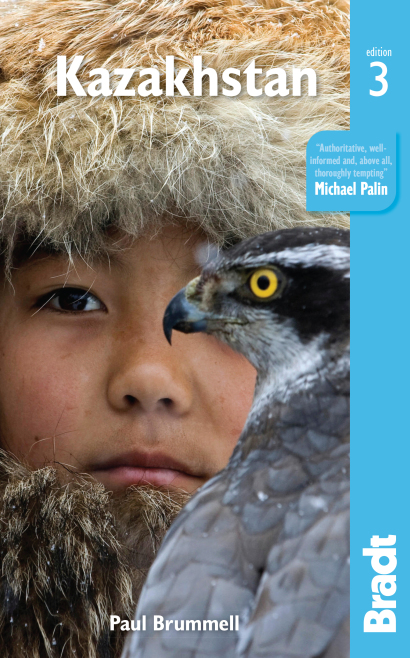Rich with the symbols of the post-independence regime, Astana is an urban expression of Kazakhstan’s achievements and a statement of an increasingly wealthy and confident country. The capital of Kazakhstan since 1997, it has grown at a staggering rate in terms of population and infrastructure.
World-renowned architects have been enlisted to help build the city, and it now hosts some of the most remarkable buildings in all of central Asia. Here are just a few of the highlights.
Palace of Peace and Reconciliation
Taking the form of a pyramid, as a structure with no denominational connotations, the Palace of Peace and Reconciliation is an impressive sight. The building was designed and constructed in the short period of two years, allowing for its opening in September 2006 to host the Second Congress of World and Traditional Religions.
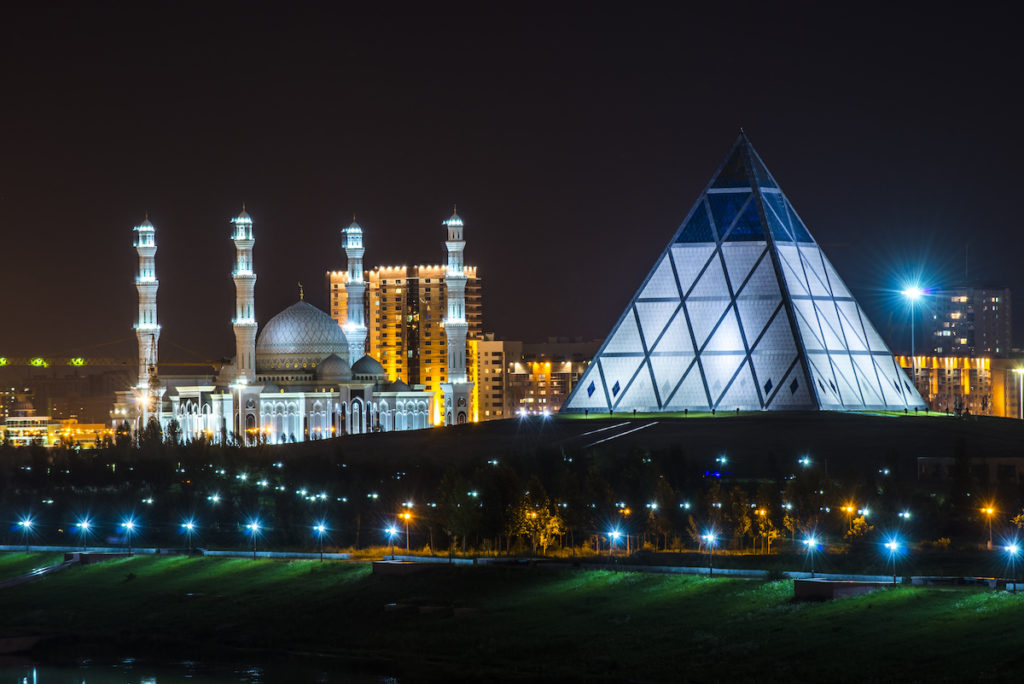
On a 15m-high earth-covered mound the 62m pyramid rises up, constructed of a steel frame, its lower levels covered in granite. You enter from the east side of the structure, into the side of the mound. The first impression given on entering the pyramid is, like Doctor Who’s Tardis, one of much greater size inside than out. This is largely explained by the fact that the earth-covered mound is itself part of the structure.
Khan Shatyr
The 150m-high Khan Shatyr is the world’s largest tent and was designed by British architect Norman Foster. Although from the outside the tent appears to be leaning precariously, on the inside you can clearly see the intricate and surprisingly attractive latticework of steel that supports much of the structure’s weight. This view is not unlike the inside of a beehive, and the precision with which each glazed panel interconnects with the next is striking.
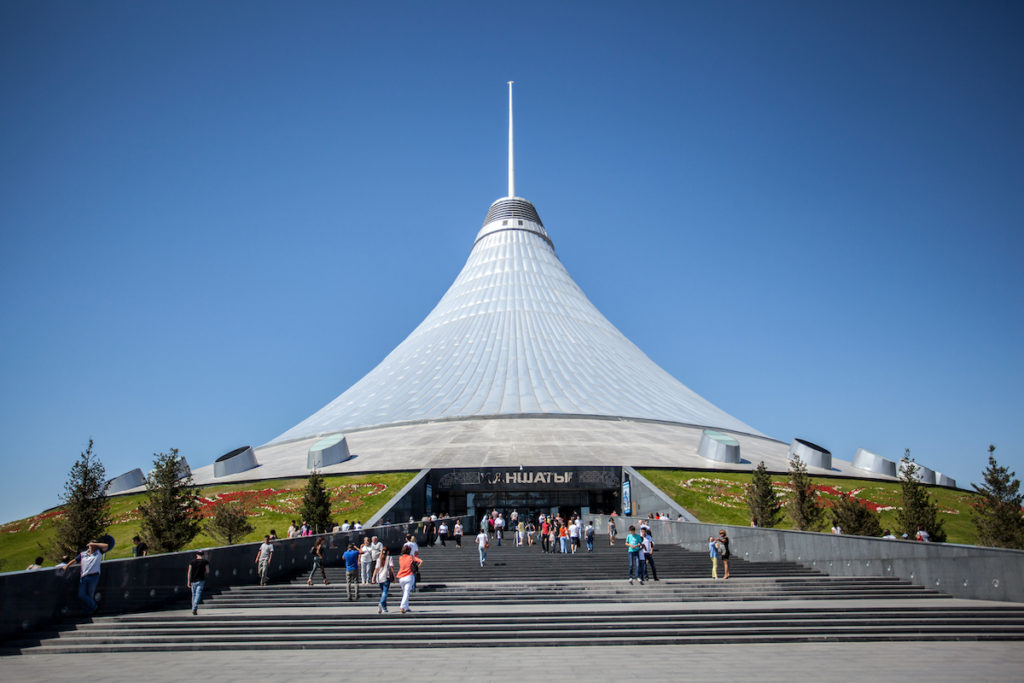
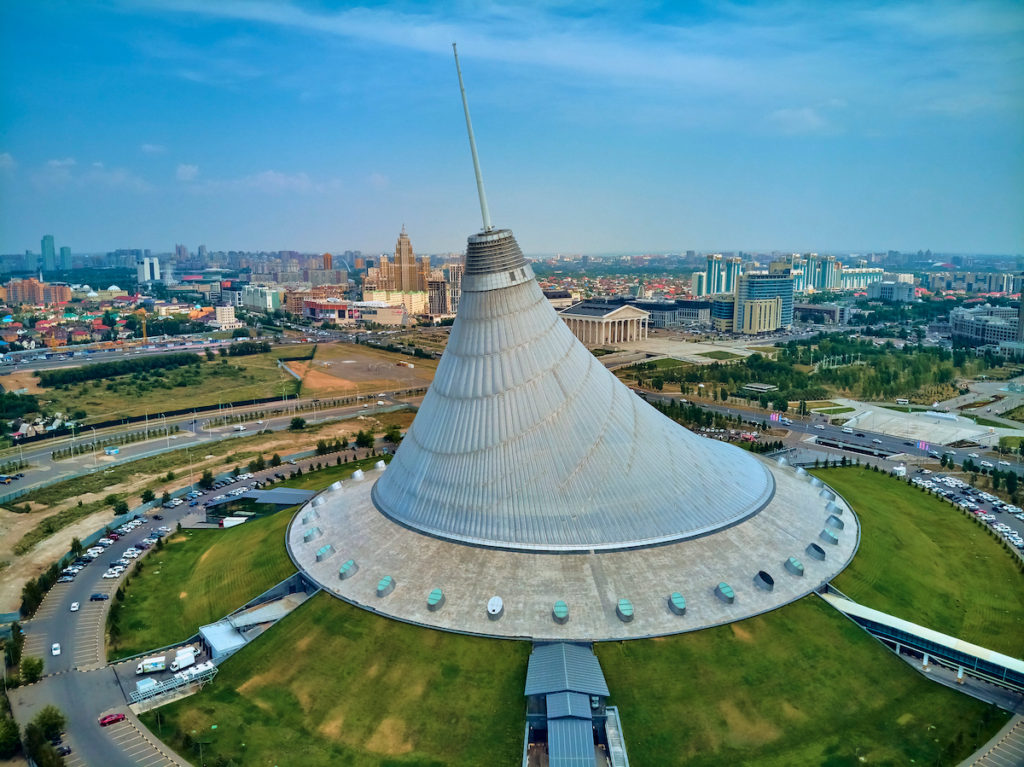
The complex is maintained at 24°C year-round and includes a waterpark, indoor canals with gondolas, a mini-golf course, a miniature train, designer label boutiques, a cinema and spa, restaurants, apartments and a large central performance space.
Baiterek Tower
At the heart of a large square centred on the Nurzhol Boulevard stands a monument that has become a symbol of Astana and indeed of post-independence Kazakhstan: the Baiterek Tower. It takes the form of a tall tower topped with a large golden globe, the latter positioned at a height of 97m in commemoration of Astana’s elevation to the status of state capital in 1997.
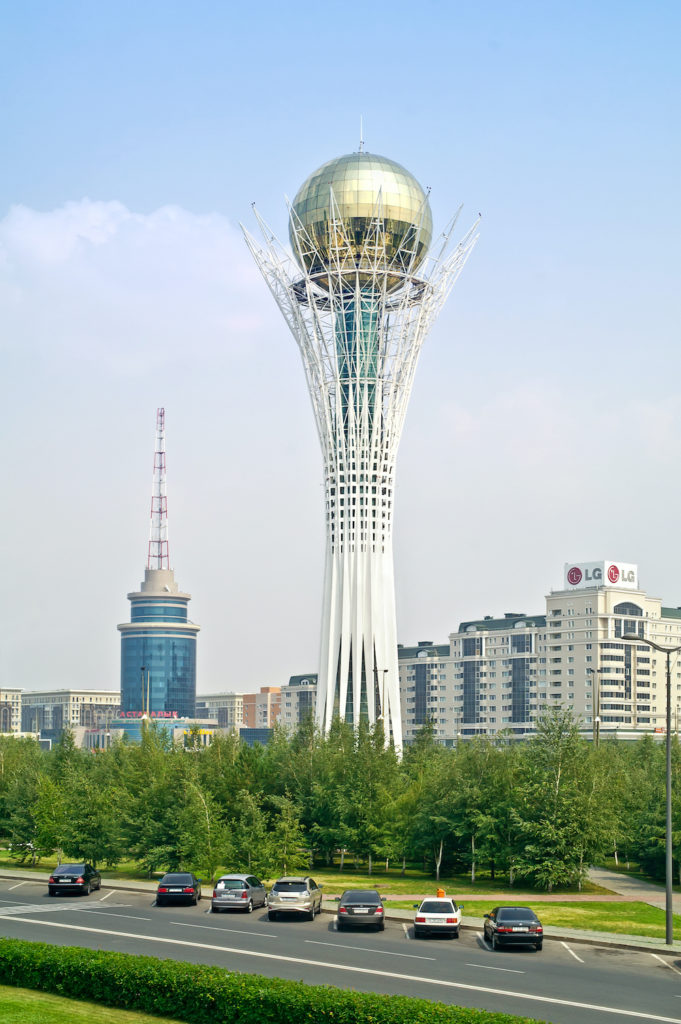
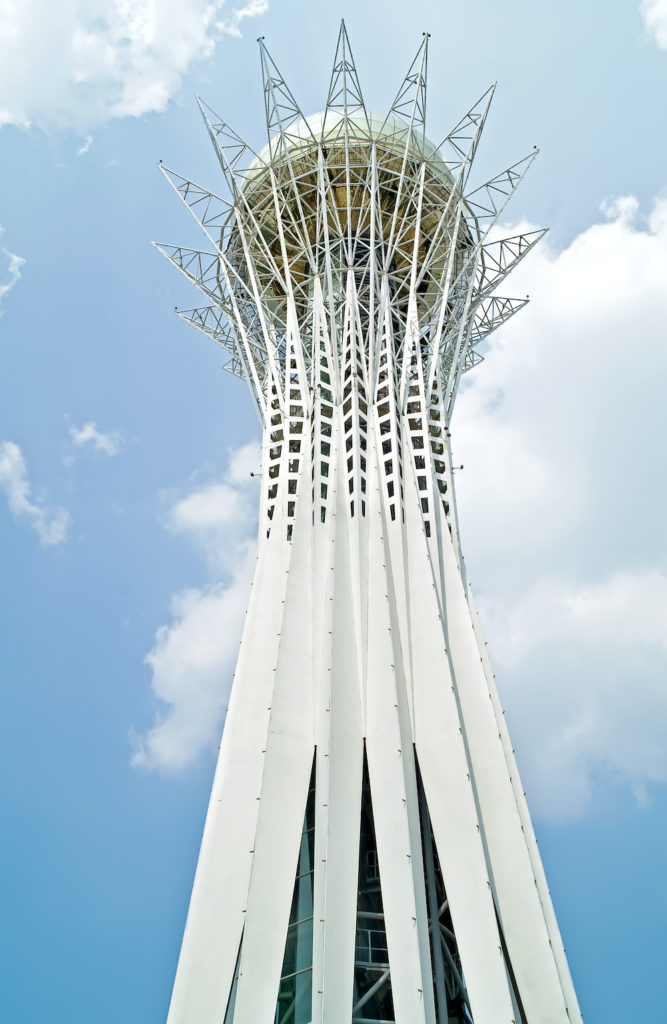
A white metal structure branches out beneath the golden ball, appearing to cradle it. The form of the monument is heavy with symbolism. According to an ancient Kazakh legend, on the banks of the World River grew the tree of life, Baiterek. The roots of the tree lay in the subterranean world, its trunk in the earthly one and its crown in the heavens.
Each year the sacred bird Samruk laid a golden egg in the crown of this tree, only for it to be consumed by the dragon Aidakhar, which lived at the base of it. This annual routine of egg laying and destruction symbolised the switch between summer and winter, day and night, good and evil.
Ak Orda Presidential Palace
At the east end of Nurzhol Boulevard are two tall conical buildings, faced in a covering of reflective gold. North and south of these a large, curving, wall-like building, which houses various government ministries and agencies, essentially serves to enclose the space to its east, up to the bank of the Ishim River beyond.
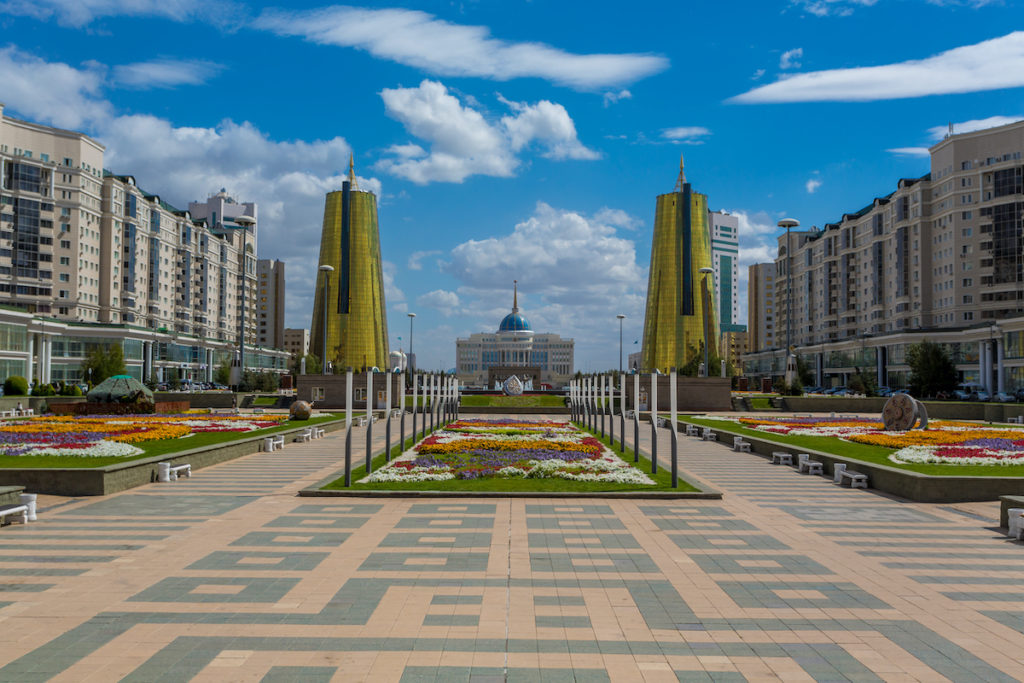
In this enclosed space lie the seats of legislative, executive and judicial power in Kazakhstan. The wall-like building is punctured by two roads serving the institutions beyond: large tiled arches within the framework of the building make way for the roads.
The Northern Lights
The trio of ‘wavy’ sided, green-glass-faced apartment blocks on Nurzhol Boulevard is known as the Northern Lights, the idea being that its shimmering forms will evoke the aurora borealis among those who behold it.
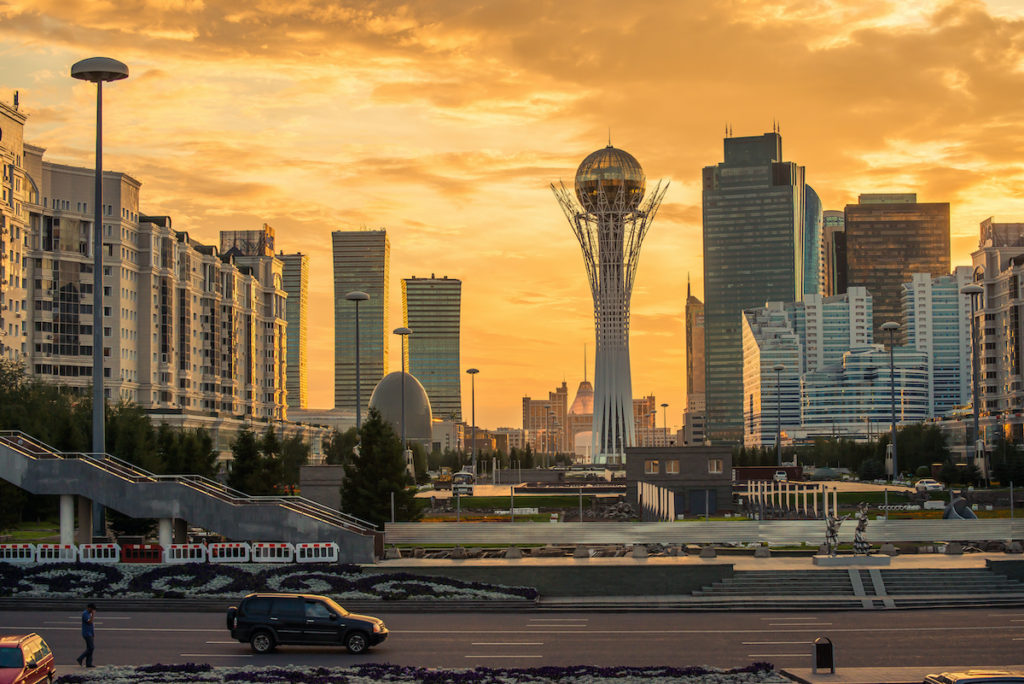
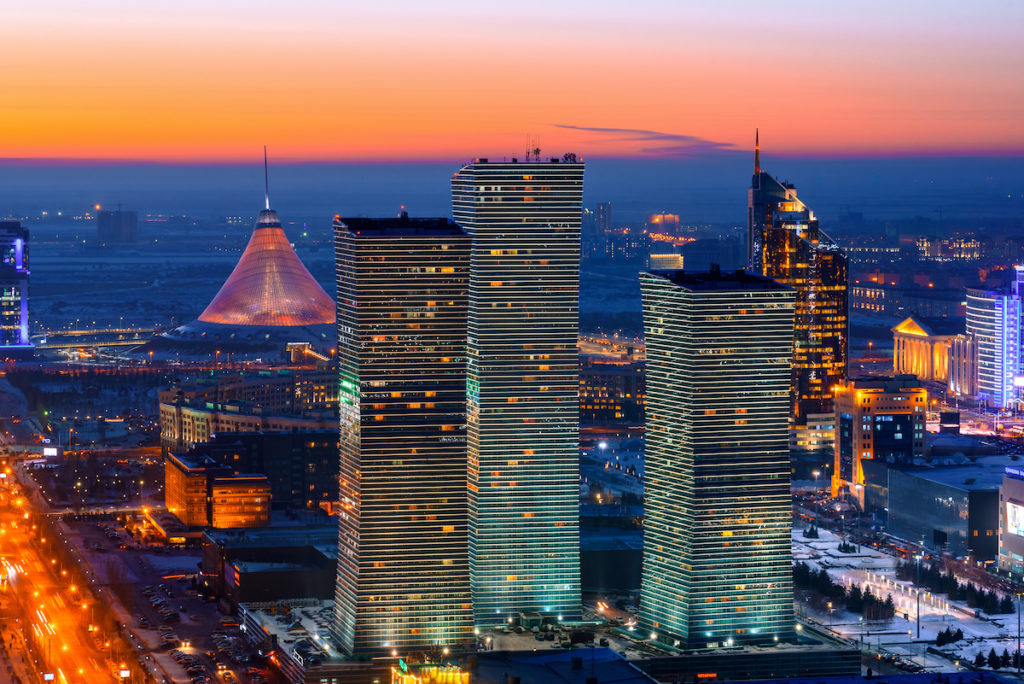
The slender tilting green skyscrapers opposite, Emerald Towers, were completed in 2012 and are at present the tallest buildings in Kazakhstan.
Metropolitan Circus
Across the Korgalzhyn Highway from City Park is Astana’s circus, a building that looks rather like a concrete spaceship.
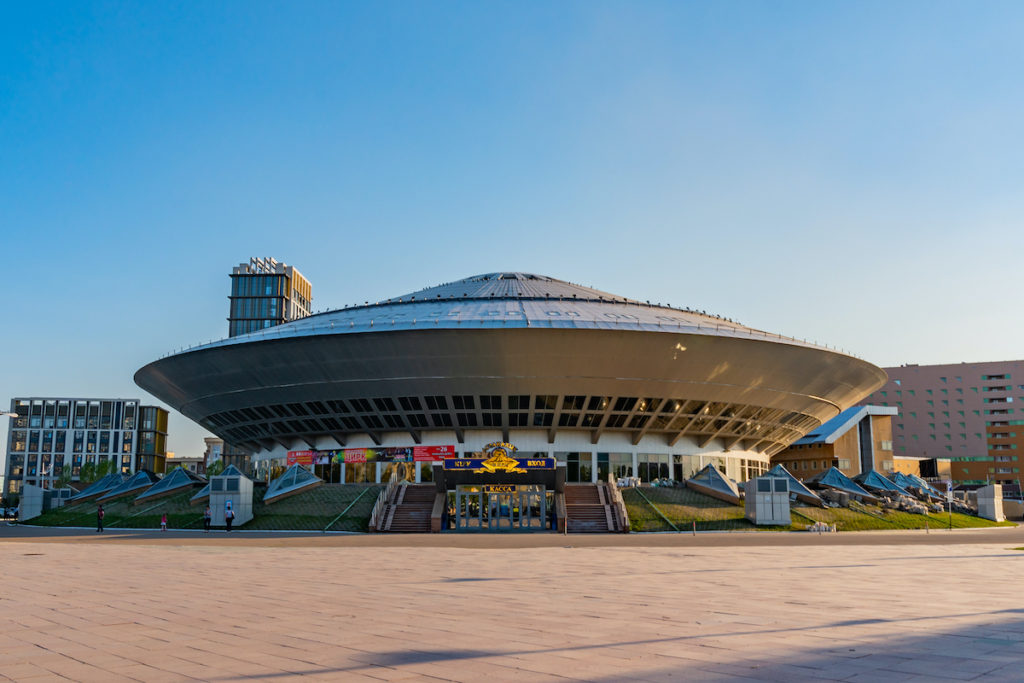
Built in 2005, the building seats spectators and is equipped for ice shows as well as traditional circus acts.
Kazakhstan Central Concert Hall
Designed by Italian architect Manfredi Nicoletti, the building was inaugurated by then President of Kazakhstan, Nursultan Nazarbayev, on the nation’s Independence Day – 15th December – in 2009.
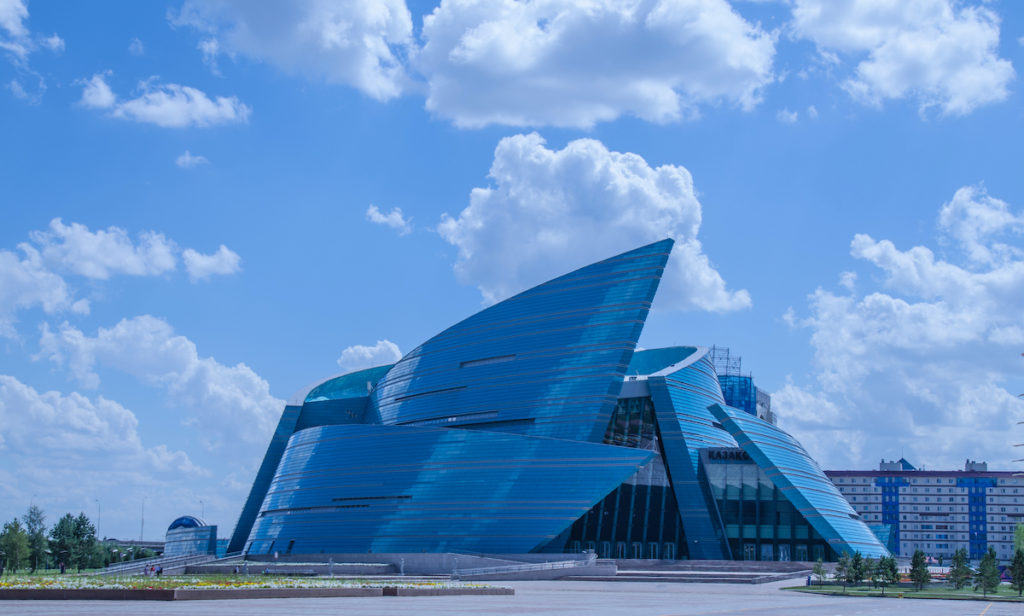
The concert hall houses a 3,500-seat auditorium for film screenings, and a second auditorium for performing arts including ballet and classical music concerts.
More information
Eager to explore more of Kazakhstan? Take a look at our guide:
